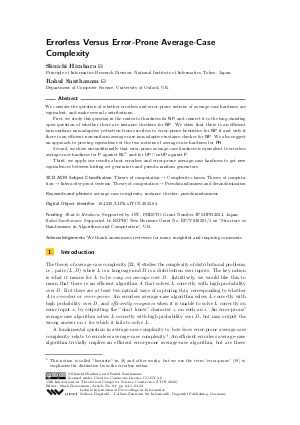LIPIcs.ITCS.2022.84.pdf
- Filesize: 0.77 MB
- 23 pages

 Creative Commons Attribution 4.0 International license
Creative Commons Attribution 4.0 International license




Feedback for Dagstuhl Publishing